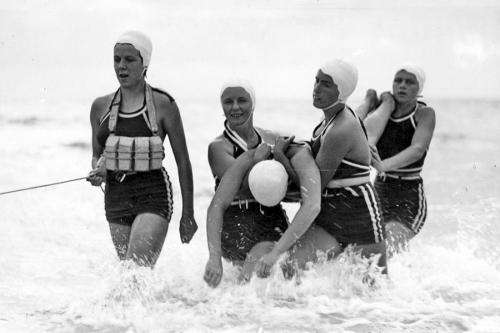Measuring the invisible value of volunteering

The economic and social value of community-based organisations and volunteering in Australia is being underestimated according to a group of UTS researchers.
This is because services are being measured only by their short-term, dollar replacement value, they say, rather than the longer-term and multilayered contributions of organisations like Surf Life Saving Australia.
The Cosmopolitan Civil Societies (CCS) Research Centre at UTS, with the help of Surf Life Saving Australia (SLSA), has been working to develop a new tool to better measure this wider social impact.
Just over six million Australians – more than a third of the population – spend time volunteering, according to the Australian Bureau of Statistics.
"Every day volunteers develop and implement solutions to address vital social issues such as homelessness, safety on the beach, emergency services and care for the elderly and less able," UTS researcher Dr Melissa Edwards said. This is often on behalf of, or in the place of, government.
Governments and private donors rightly want to ensure public and philanthropic funds are used efficiently in these often highly sophisticated programs Dr Edwards said.
This can involve trying to put a dollar figure on the impact of a program – measuring and valuing its outputs and perhaps monetarising this as a rate of return on investment (ROI).
But Dr Edwards said this sort of measurement does not take into account the other important and meaningful impacts such organisations have, as they create, build and maintain flourishing civil societies.
"Impacts are felt far beyond the mere delivery of programs and reverberate into the wider community," she said. "By trying to monetarise the rather qualitative, long-term and multilayered outcomes, the true value of volunteering activities and of the coordinating organisations is largely underestimated."
Volunteer work should not be undervalued as "free", nor can the active citizenship it produces be assigned a dollar amount or financialised as ROI, she said. "People who are active citizens, through volunteering, support and create civil society," she said. "They are the invisible hands of social prosperity."
The CCS Research Centre, in partnership with SLSA, has been working on a new tool to measure social impact.
Researchers led by centre co-director Jenny Onyx, Professor of Community Management at UTS Business School, have come up with a "ripple model" that uses statistical indicators to make visible all the contributions such organisations make – rippling out from the individual and club to wider networks of people and organisations and society itself.
"What we are talking about here is a paradigm shift," Professor Onyx said. "It's not just about service delivery, it's about citizenship."
The Productivity Commission has in the past cited Surf Life Saving Australia as an exemplar for its reporting, for example by valuing the direct replacement cost of its beach patrol activities. But a UTS survey of its volunteers – from directors to toe-in-the-sand members – uncovered a much broader and deeper impact.
SLSA Development Manager Vanessa Brown said the ripple model has helped the organisation better understand its wider social contribution and develop more effective ways to put a value on it.
"We could put a value on the hours volunteered, the lives saved, on the gear and equipment. However the social impact is not as quantifiable and our surf lifesavers do a lot more," Brown said.
"The study helped us to define a way in which we will be able to see the benefits members experience from being part of their local surf club, including feeling welcome and valued, developing a network, and gaining skills for use in other aspects of their lives. The development of this human capital has effects that rippled out into wider society."
As a result the SLSA is better able to demonstrate how it is achieving its mission of "saving lives, developing great Australians and building better communities."
Provided by University of Technology, Sydney

















